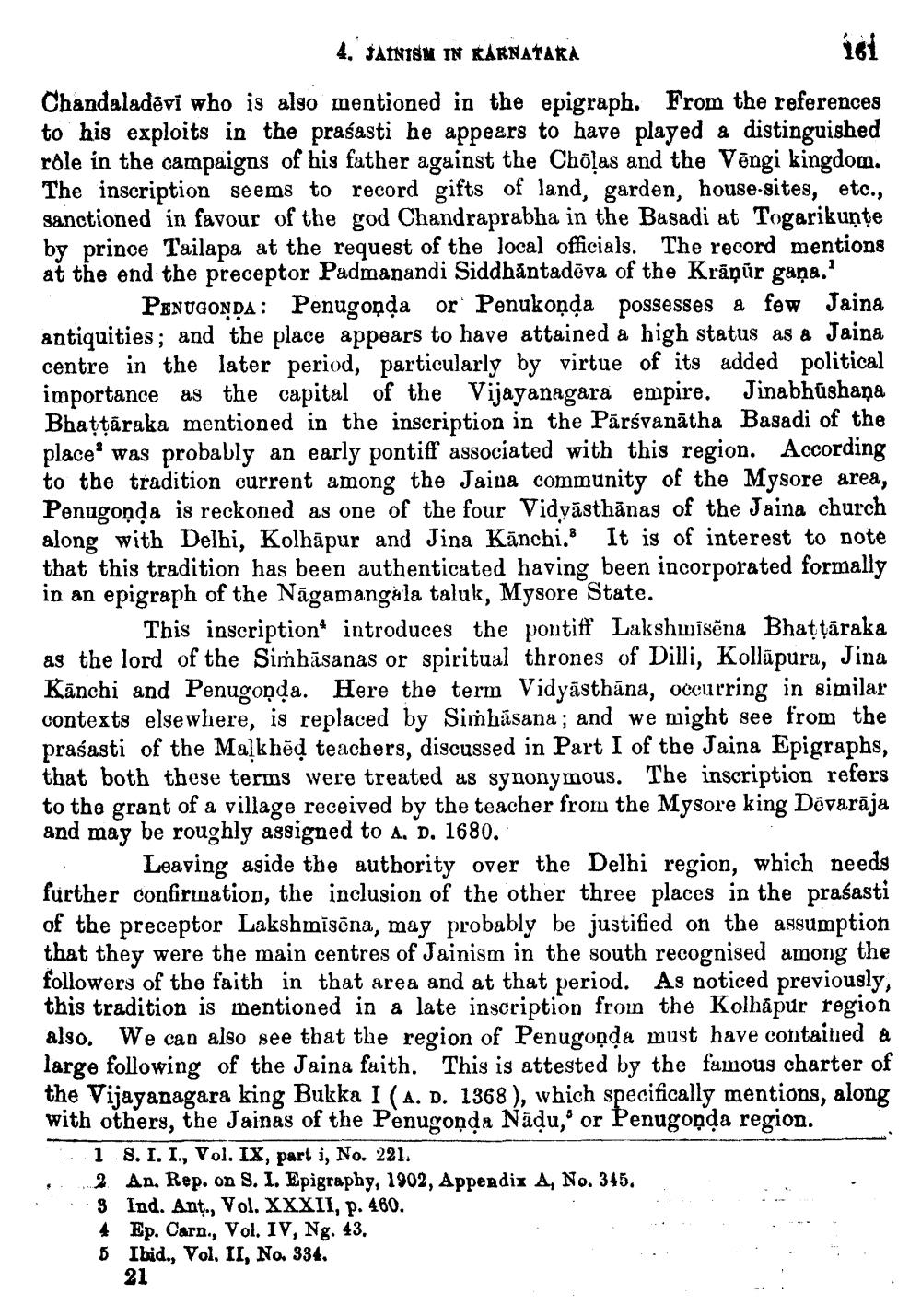________________
4. JAINISN IN KARNATAKA
ici Chandaladēvi who is also mentioned in the epigraph. From the references to his exploits in the praśasti he appears to have played a distinguished role in the campaigns of his father against the Cholas and the Vôngi kingdom. The inscription seems to record gifts of land, garden, house-sites, etc., sanctioned in favour of the god Chandraprabha in the Basadi at Togarikuņte by prince Tailapa at the request of the local officials. The record mentions at the end the preceptor Padmanandi Siddhantadēva of the Krāņür gana."
PENUGONDA: Penugoņda or Penukoņda possesses a few Jaina antiquities; and the place appears to have attained a high status as a Jaina centre in the later period, particularly by virtue of its added political importance as the capital of the Vijayanagara empire. Jinabhushana Bhattāraka mentioned in the inscription in the Pārsvanātha Basadi of the place was probably an early pontiff associated with this region. According to the tradition current among the Jaina community of the Mysore area, Penugoņda is reckoned as one of the four Vidyāsthānas of the Jaina church along with Delhi, Kolhāpur and Jina Kānchi. It is of interest to note that this tradition has been authenticated having been incorporated formally in an epigraph of the Nāgamangala taluk, Mysore State.
This inscription" introduces the pontiff Lakshmisēna Bhatýäraka as the lord of the Siṁhāsanas or spiritual thrones of Dilli, Kollāpura, Jina Kānchi and Penugoņda. Here the term Vidyāsthāna, occurring in similar contexts elsewhere, is replaced by Simbāsana ; and we might see from the praśasti of the Malkhēd teachers, discussed in Part I of the Jaina Epigraphs, that both these terms were treated as synonymous. The inscription refers to the grant of a village received by the teacher from the Mysore king Dēvarāja and may be roughly assigned to a. D. 1680.
Leaving aside the authority over the Delhi region, which needs further confirmation, the inclusion of the other three places in the praśasti of the preceptor Lakshmīsēna, may probably be justified on the assumption that they were the main centres of Jainism in the south recognised among the followers of the faith in that area and at that period. As noticed previously,
s tradition is mentioned in a late inscription froin the Kolhapur region also. We can also see that the region of Penugoņda must have contained a large following of the Jaina fuith. This is attested by the famous charter of the Vijayanagara king Bukka I (A. D. 1368 ), which specifically mentions, along with others, the Jainas of the Penugoņda Nādu, or Penugoņda region.
1 8. I. I., Vol. IX, part i, No. 221. 2 An. Rep. on S. I. Epigraphy, 1902, Appendix A, No. 345. 9 Ind. Ant., Vol. XXXII, p. 460. 4 Ep. Carn., Vol. IV, Ng. 43. 5 Ibid., Vol. II, No. 334.
21




